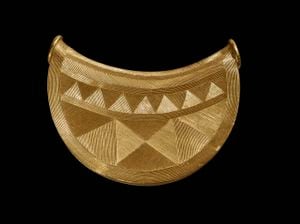Shropshire Sun Pendant to be exhibited at the British Museum
The rare 3,000-year old Shropshire sun pendant, which is to go on display at the British Museum next year, will be joined by another extraordinary artefact from the period.

The gold pendant was found by an anonymous metal detectorist at an undisclosed location in the county in 2018. It is thought to be one of the most significant pieces of Bronze Age metalwork ever unearthed in Britain.
It is so rare that the site at which it was discovered has been kept a secret and simply referred to as the Shropshire Marches.
It will be joined in the 'The World of Stonehenge' exhibition by an artefact known as The Nebra Sky Disc – a 12-inch wide bronze disc which is thought to represent the sun, the moon, the stars and the solstices.
It is believed that it was used by farmers as a calculator for when best to sow seeds and harvest crops.
The Nebra Sky Disc is named after the area of Saxony-Anhalt, Germany where it was dug up in 1999. It was originally unearthed by two looters who were understood to be hunting for treasure without a licence and who damaged the disc with their tools as they were digging.
They later sold the disc, along with a collection of swords and other items, in Cologne. The disc was recovered in Switzerland in 2002, having changed hands several times.
Both The Nebra Sky Disc and the Shropshire Sun Pendant will be highlights of the Stonehenge-era exhibit at the British Museum. It is scheduled to run from February 17 until July 17 next year.





